
It’s starting to happen: BMWs are showing up at your shop in need of reprogramming to correct a service program or to update a system. If you’re turning them away because you’re afraid to get into this high-tech operation, you’re not only losing money, you may also lose those customers for good.
Since MY 2004, all carmakers provide a system that allows anyone who does service work—dealerships, aftermarket shops, and even do-it-yourselfers—to upgrade onboard computer systems.
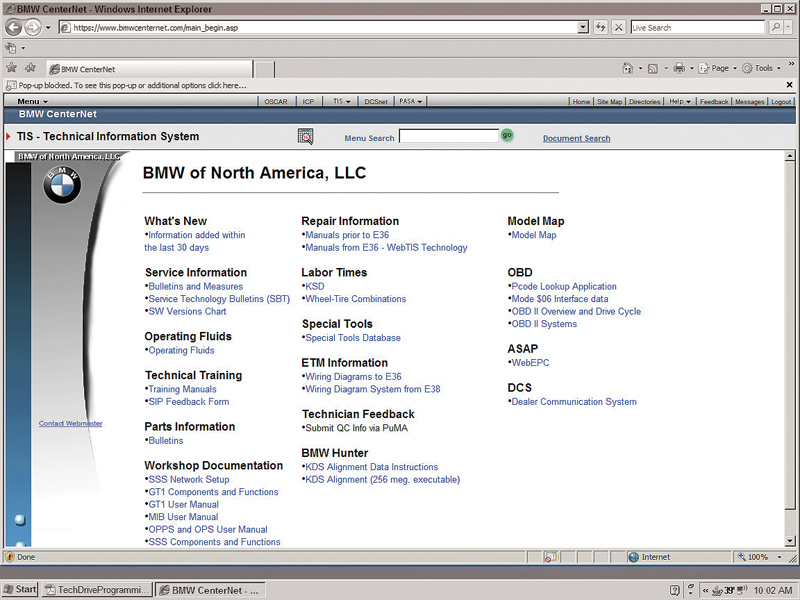
Besides giving you all the information available to dealers’ service departments, TIS also provides what you need to do reprogramming.
As an independent BMW service center, you benefit from the fact that BMW has gone way beyond EPA requirements. You have access to reprogramming for most MY ’96 and newer BMWs. The company’s www.bmwtechinfo.com website is easy to access and use. For a relatively modest subscription fee ($30 per day; $250 per month; or $2,500 per year), you get access to all the service and parts information BMW provides its dealers, plus special programs for aftermarket shops. The site also lists programming updates available for BMW cars and SAVs.
Reprogramming
Via the Internet, any shop can reprogram almost any BMW onboard computer. Access the BMW website, select the appropriate year, model, and engine, then download the software to reprogram the vehicle. The software is transferred from your PC to the vehicle using a “pass-through†(sometimes shortened to “pass-thruâ€) device. Pass-thru devices and cables are available from several aftermarket suppliers. Before you can reprogram a BMW, you must download and install some software drivers to your PC to support the downloading process. These drivers are available at no charge from BMW at www.bmwtechinfo.com
Why Reprogram?
BMW sells vehicles around the world. When each BMW rolls off the assembly line, its onboard computers must control numerous operating functions. However, these functions vary widely and include:
- Complying with government regulations for emissions levels, fuel economy, safety, and any other requirements imposed by the country where the car will be sold or operated.
- Controlling the operation of the engine and transmission.
- Controlling chassis electronics such as ABS, Stability Control, etc.
- Operating onboard navigation systems, telephone communications, and other standard or optional electronic systems.
In the early days of computer systems, things were much simpler. BMW only needed a few standard control modules. As a vehicle moved down the assembly line, the onboard modules would be programmed for the vehicle’s specific applications. This procedure not only added to the time and complexity of building a vehicle, it also forced BMW to stockpile all variations of the programmed modules to have parts available to replace any defective or damaged units. Because of all the variations required, BMW was stockpiling hundreds of different versions of its computer modules. But in the “dark ages†of computerized engine management systems, which ran from the early ’80s until the advent of OBD II, there was no other option besides programming modules at the factory.
Enter the power of the Internet. With its ability to carry anything electronic, anywhere, anytime, the Internet forever changed how data could be transmitted. All BMWs still are, of course, initially programmed at the factory. But with the right combination of hardware and software, control modules can be reprogrammed to meet new requirements virtually anywhere.
 Before reprogramming, a huge number of ECMs with different calibrations had to be stocked. Now, just a few are required. Â Setting up your PCMost modern PCs will support BMW reprogramming, but if you are still clanking away on an early PC, it might not have the power necessary. To reprogram, your PC must meet these requirements: |
Reprogramming via the Internet is a cost-effective way for BMW to correct a programming error not yet discovered at the factory or to upgrade the performance of a system to a calibration even better than new.
Reprogramming allows BMW to:
- Significantly reduce its inventory costs because it only needs to have the basic module (hardware) on hand.
- Reduce dealership inventory costs because dealers don’t need to stock modules.
- Improve customer service.
- Update onboard software without having to replace the module. Updates are used both to correct problems and improve performance.
- Add special equipment features to existing control modules. You must also make several changes in your Internet browser settings to allow downloading BMW reprogramming. With the dangers of viruses and other online hazards, the initial settings for browsers won’t allow large programs to be down loaded without your authorization. The changes are easy to make, but you have to do them in order.
The following steps illustrate the settings using Internet Explorer and Windows XP Professional SP1. Other versions may have slightly different wording, but these procedures should guide you through just about any system setup:
- During any reprogramming session, you should disable any “pop up blocker†installed on your Internet browser.
- Internet Tools: “Internet Options†is under the “Tools†heading. Click “Tools†and then click “Internet Optionsâ€

- Security:Select the security box under the tools options. When the “Internet Options†box opens, select the “Security†tab. In the “Security Settings†box, select “Medium†as the “Reset Custom Settings†option. Then make sure the following are “approved†or “enabled:â€
- Download signed ActiveX controls > Prompt
- Run ActiveX controls and plug-ins >Enable
- Script ActiveX controls marked safe for scripting >Enable
- Allow META REFRESH >Enable
- Active Scripting >Enable
- Allow post operations via script >EnableAfter enabling these settings, click “OK†to close all dialog boxes.
- Certificates: Click “Tools” and “Internet options” again, and select “Certificates.†When the box opens, pick “Trusted Root Certification Authorities.†A box with a long list of authorities will appear. Click “TC TrustCenter Class 2 CA†and then select “View.â€
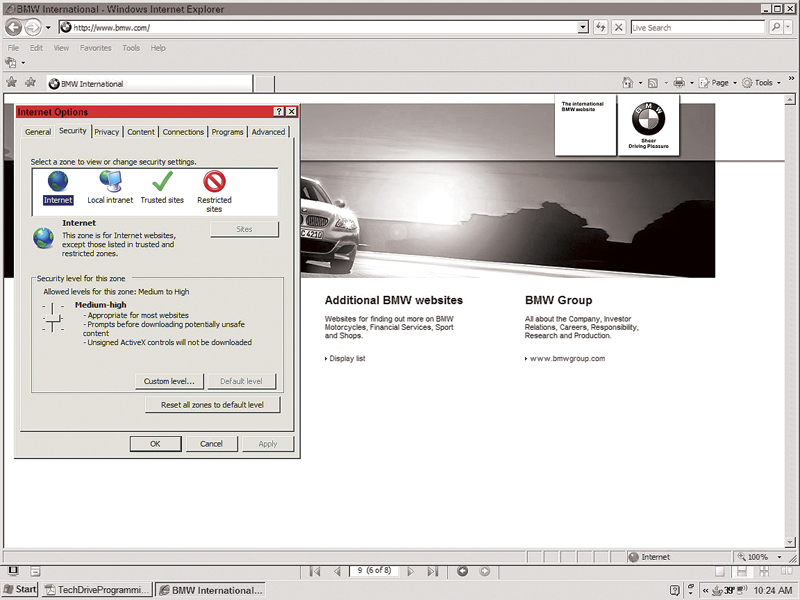
You will see the “Certificates†box open up again. This time you want to pick “Details†and then “Edit Properties.â€In the box that is now displayed, select “General†then in “Certificate Purposes,†you want to check “Code Signing.†Now close all the boxes by clicking “OK†or “Close.â€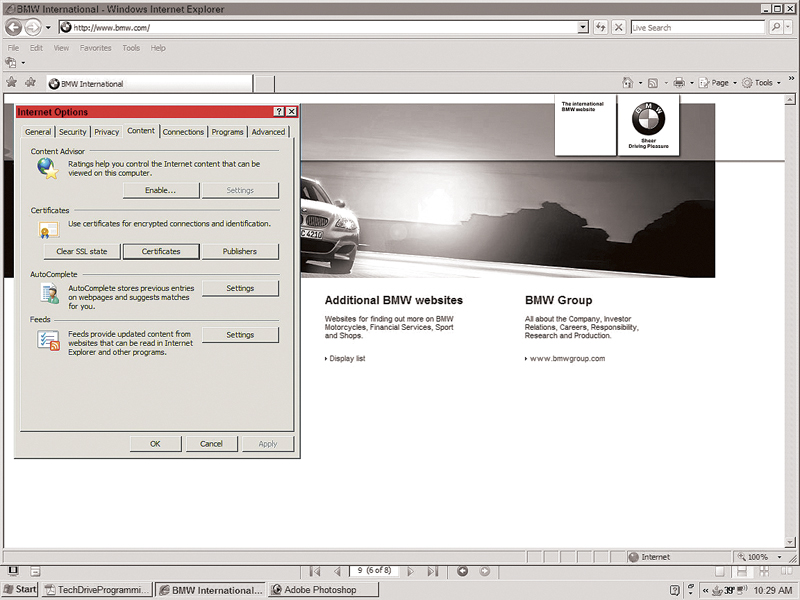
- Activate Microsoft MV: Activating Microsoft MV is the last step. Now go back to “Tools†and select “Internet Options†again. This time you want to open the “Advanced†tab. Find “Microsoft MV†and make the following selections:
You will have to restart or reboot your computer for all of the settings to take effect. The first time you reprogram, you must download the BMW Specific Driver, version greater than 0048, at www.bmwtechinfo.com.
Standardized Communications
Without getting too deep into programming issues, we should mention that reprogramming onboard modules is more difficult than reprogramming a typical PC. In fact, some people say that onboard programming shouldn’t be called “software†but “firmwareâ€! We’ll let the computer people debate that, but we’re going to stick with software because that’s the term most people know.
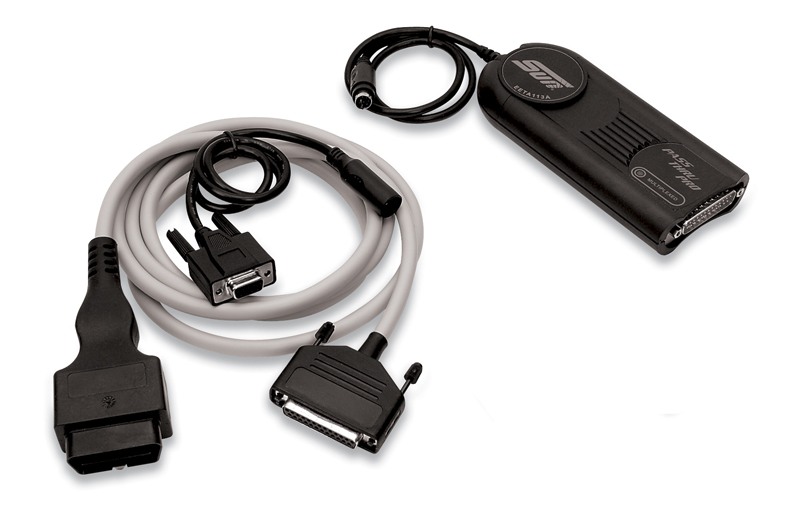
A “Pass Thru†device links your PC to the vehicle’s onboard computer for reprogramming. The hardware is an industry standard, so you only need one device to reprogram any vehicle.
As already mentioned, initially, only authorized BMW dealers could reprogram. But the federal EPA mandated that carmakers provide anyone who services vehicles access to reprogramming at a “reasonable cost.†To ensure that all carmakers use a standardized system, EPA was assisted by the Society of Automotive Engineers (SAE), which developed the J2534 protocol. The process was similar to the development of OBD II in the early 1990s. EPA mandated the system and SAE developed the standardized access to OBD II using any scan tool.
We have to use a little “geek speak†to discuss J2534. The protocol is an “Application Programming Interface†(API). An API enables two different software systems to “handshake†or work together. If you have ever printed a document from your PC, you’ve used an API, probably without knowing it. An API is needed to allow any Windows-based program, like MS Word or Excel, to communicate with the built-in software that controls the printer. If Microsoft and the printer manufacturers had not agreed on an API, changing or upgrading a printer would not be a matter of “plug and play.†Instead, you would have to reprogram all the software in your PC to work with your new printer.
J2534 standardizes the reprogramming communications between all carmakers and their vehicles. You access the carmaker’s website with your PC and your Internet access program to download the vehicle reprogramming software. Your pass-thru uses the J2534 API to transfer the reprogramming from your PC to the vehicle.
That’s why you need only one pass-thru device to reprogram any vehicle from any manufacturer, but the specific upgrade for any vehicle can only be obtained from the individual carmaker’s website.
When investing in any pass-thru device, make sure the manufacturer certifies that the product fully complies with J2534. The device will work for your BMW customers, plus any other carmaker’s vehicles your shop services.
Reprogramming A BMW
Although you can reprogram with a relatively slow 56k bit Internet connection, you will be online for a very long time. To save time, upgrade to a DSL or other high-speed Internet connection.
Even with a high-speed connection, reprogramming some vehicles can take several hours. In some cases, reprogramming via the Internet may be impractical. The E60 and later platforms with Navigation and premium audio could take up to 40 hours to reprogram! BMW is aware of the problem and is trying to reduce reprogramming times for these models.
A steady electrical supply to the vehicle must be maintained while reprogramming. If there is any disruption or loss of steady voltage in the power supply, the programming may stop or, worse, the new program can be incorrectly loaded, causing all kinds of problems.
To ensure constant power, the vehicle must be connected to an “intelligent†battery charger with a controllable power supply for constant voltage and high-amperage current. You can purchase a reprogramming charger from your local BMW dealer. The power source must be:
- Microprocessor controlled.
- Rated at 150 Ah with a 10 Ah or higher resolution.
- Capable of monitoring amperage draw and matching output to current draw. For example, if reprogramming puts a 30 amp draw on the vehicle’s electrical system, the charger must be capable of maintaining a 30 amp flow into the battery.
- Minimum 12.4 volt/maximum 14.4 volt output.
- Power supply current of 45A with 0.05A or higher resolution.
- Non-sparking, with delayed switch on.
Complete the steps shown in “Before Your Program,†make the connections between your computer, your pass-thru, and the vehicle. Then go online to www.bmwtechinfo.com. Select the reprogramming for the BMW you are servicing, and start the download. You are now reprogramming.
Before You Reprogram
|


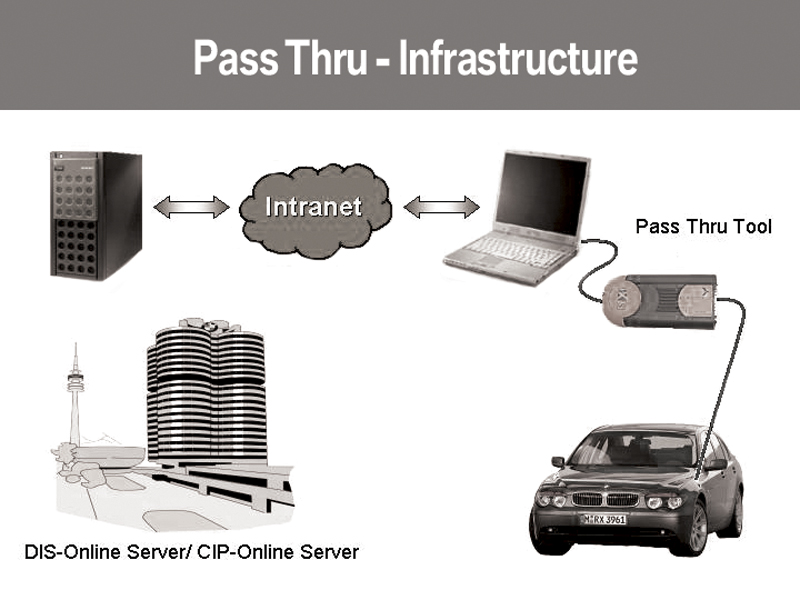
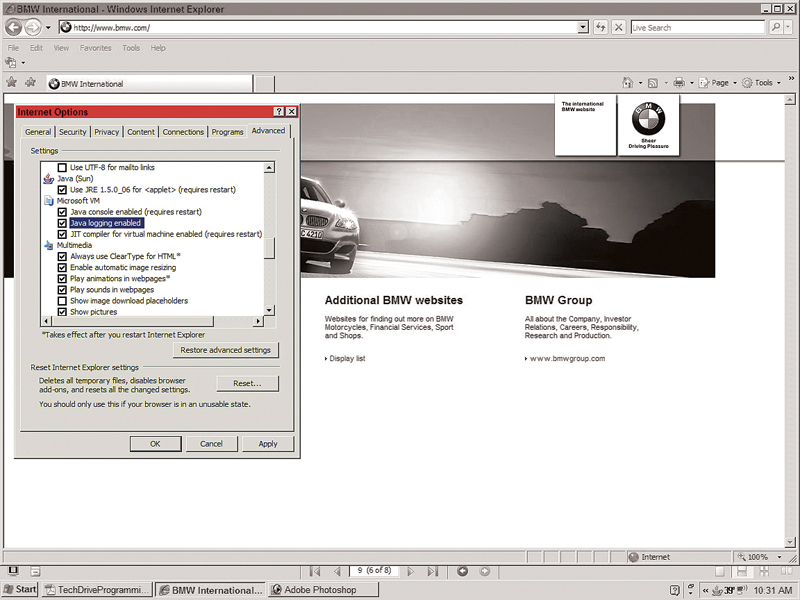
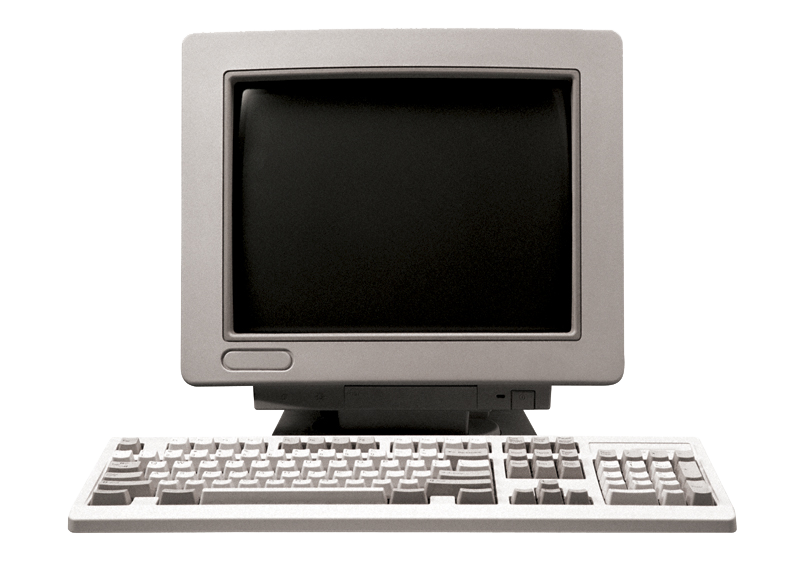 Always set up the vehicle properly before you attempt to reprogram any BMW:
Always set up the vehicle properly before you attempt to reprogram any BMW:
0 Comments